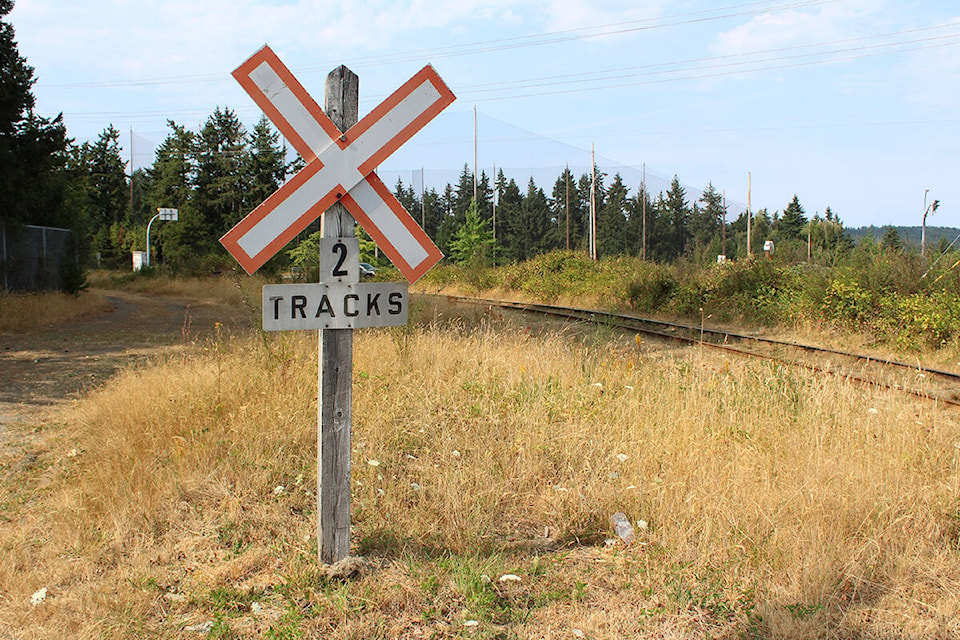A group dedicated to converting the E&N rail line into a multi-use trail system wants a thorough cost-benefit analysis done on the potential future uses of the deteriorating 220-kilometre corridor.
Speaking to the Cowichan Valley Regional District’s committee of the whole on July 12, David Slade, vice chair of Friends of Rails to Trails Vancouver Island, said the group recently completed a feasibility study on switching the corridor from rail to trail with a $35,000 grant it received from the federal Action Transportation Fund.
He said the study estimated it would cost approximately $172 million to switch the entire corridor, from Langford to Courtenay and Parksville to Port Alberni, from rail to a world-class multi-use trail that would be widened and be partially paved, which would be about $590,000 per kilometre.
RELATED STORY: TRAIL ADVOCATES ASK FOR ACTIVE TRANSPORATION ALONG VANCOUVER ISLAND’S RAIL LINE
“The study suggests such a trail could bring as many as 860,000 person visits a year,” Slade said.
“There would be a lot of potential for tourism which is a huge economic driver. If we continue to think rail with trail along the corridor, we’ll never see a link that joins all our communities.”
The future of the E&N corridor has been in limbo since March when a section of the rail line was returned to the Snaw-Naw-As First Nation reserve, located north of Nanaimo.
Slade said the province is distributing $18 million to First Nations and local governments along the corridor, with the CVRD receiving $600,000, to conduct consultations on the future of the rail line.
He said he is proposing that the CVRD work with all the other recipients of the provincial funding to commission a complete section-by-section cost benefit analysis of the future uses of the corridor, including, but not limited to, rail to trail conversion of the entire corridor.
RELATED STORY: CVRD VOTES TO SUPPORT RESTORATION OF ISLAND RAIL
“Such a study will use only a small portion of the $18 million in funding, but it would be an essential element in any efforts to engage in meaningful cost consultations on the future of the corridor,” Slade said.
“The federal Active Transportation Fund is a $400-million fund and up to $50 million per project is available and the feds are trying to get this money out the door. Based on our estimates, $50 million would create a world-class active transportation corridor all the way from Langford to Ladysmith, and the entire rail line in the CVRD could be done for $25 million.”
Slade encouraged the CVRD to “move with all possible haste” to work with the other jurisdictions to get the cost-benefit analysis done so plans can be made on the future of the corridor.
RELATED STORY: VANCOUVER ISLAND FIRST NATION CALLS FOR REPURPOSING OF E&N RAIL LINE
Slade was informed that the committee generally doesn’t make any motions on issues at the same meeting as delegations, but CVRD board chair Aaron Stone said he expects First Nations and local governments along the corridor will also have to deal with ancillary costs, including the removal of the rails and remediation, on top of the $172 million that Slade estimated it would cost to switch from rail to trail.
He said he wouldn’t be prepared to consider allocating any of the funding from the province until the CVRD meets and has discussions with the other local governments and First Nations involved.
“We have differing opinions on what the best and highest use of the corridor should be in the long term, but I’ve always said that if rail is truly dead, that I want to see us preserve the corridor for future generations as best as possible,” Stone said.
“I’m a big supporter of active transportation in general, but I still think there’s a lot of questions that need to be answered. I get that an in-depth study would answer those questions, but I think that’s a phase that comes later once we’ve actually come to the table with all the First Nations and local governments involved.”
robert.barron@cowichanvalleycitizen.com
Like us on Facebook and follow us on Twitter
